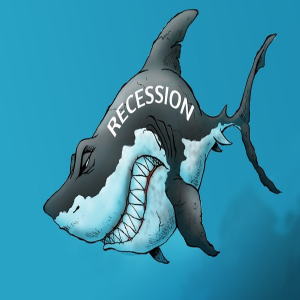The Hawaiian steel guitar changed American music. Can one man keep that tradition alive?
Published in Lifestyles
The Hawaiian craze produced a wave of eager young learners in the U.S. One Cleveland-based enterprise, the Oahu Publishing Company, founded in 1926, sent salesmen door to door, promising families a free guitar for every child that completed a year's worth of lessons. It became known as the "Amway of Hawaiian guitar," encouraging its 200,000-some alumni to buy studios and sell materials themselves.
That was how Joanne Parker and Janis Crum first learned the guitar while growing up on a dairy farm in Eaton Rapids, Mich.
"We were very excited about it," Crum said. "Those days you would allow a stranger to stand at your door and talk. Nowadays, you would think twice."
After graduating from high school in 1948, the twins began traveling around the country as the Williams Sisters, playing Hawaiian steel guitar at three to four school assemblies a day and conventions for adults. Now 93, they still play together every week, though their listeners have changed.
"We do a lot of entertaining now, but our audiences are retirement centers," said Crum.
The golden era for Hawaiian steel guitar was eventually trumped by the popularization of the electric guitar — born out of efforts to amplify the Hawaiian instrument — which became a cornerstone of rock and roll, enrapturing the next generation of music lovers.
The addition of pedals made steel guitar a country music staple, while blues and jazz musicians adopted the slide guitar, which utilized a similar gliding technique while holding the guitar upright. Meanwhile, the quintessential Hawaiian sound was losing appeal at home.
By the 2000s, Hawaiian music fans had started a letter-writing campaign to the high-rise hotels along Waikiki Beach, asking them to bring back the traditional island melodies, said Bill Wynne, 53, who grew up listening to his father play steel guitar in New Jersey.
The hotels responded by saying their guests would rather hear other kinds of music instead.
"If you walk the streets of Waikiki now, you'll hear jazz bands, you'll hear piano lounges, you will hear reggae and salsa bands," said Wynne. "You will not hear a shred of Hawaiian music."
: :
Sitting in front of his computer, Akaka tilts his video camera down onto his lap, to show how his fingers move along the guitar. Some of his students, joining virtually, are similarly positioned. Others have their cameras turned off, their mics muted.
"Leilani, how are you doing with this song?" he asks an attendee from Orlando.
"I'm still struggling," she admits. "It's not smooth."
"For me, teaching is like a responsibility... and I want to help to bring it back," Akaka says. "I feel it was passed on to me, by everybody else I used to play with."
Looking through photographs at his desk, he marvels at the older generations, and the new.
"I used to play with a lot of old-timers. I was always the baby in the group," he says, pointing out where he stood, still black-haired, next to the legends of his day. "A lot of these guys are gone now."
When Daniel Tremblay, 73, approached Akaka for instruction eight years ago, he said Akaka was hesitant to divert his attention from his younger students. But the retired lawyer was persistent.
Now Tremblay has joined Akaka on his mission, offering free lessons for beginners Thursday afternoons at the Hyatt Regency on Waikiki Beach.
"You've gotta get the kids to put down their devices and pick up a guitar," said Tremblay, who added that while can't play like Akaka, he hopes to inspire the next young learner who can.
Akaka doesn't have exact numbers on how many players his school has trained, or any other metrics that can definitively prove that the instrument is on the upswing. But he is encouraged by small signs that appreciation for Hawaiian steel is slowly returning. He cites the return of the instrument in Waikiki and in hula competitions, and rising prices for vintage steel guitars.
Kilin Reece, who founded the Hawaiian music nonprofit Kealaki Center for Pacific Strings in 2019, said a renewed interest in Native languages and culture has enabled grant funding for projects that feature the Hawaiian steel guitar, including an online museum and a pilot program to make lap steel guitars out of invasive tree species in Hawaii.
"There is a great renaissance happening right now in Hawaiian musical arts," Reece said.
Many of Akaka's next-gen students are now grown, though he still remembers when some of them were dwarfed by their instruments and their feet dangled off their chairs during their first performances.
When Malie Lyman first started studying with Akaka at age 8, he considered her to be the youngest Hawaiian steel guitar player in the world. Now 20, she is one of the best-known Hawaiian musicians of her generation, traversing Hawaii and the West Coast, playing professionally.
"Steel guitar isn't the rhythm, it isn't the heartbeat, it's the cherry on the top," Lyman said. "It's kind of like the glitter to the song."
She hopes to teach her own children how to play someday, to preserve its importance in her Native culture.
"I'm trying my best to keep it known, and I think I'm doing a good job," Lyman added. "As long as its being played, it's doing OK."
©2024 Los Angeles Times. Visit at latimes.com. Distributed by Tribune Content Agency, LLC.






Comments